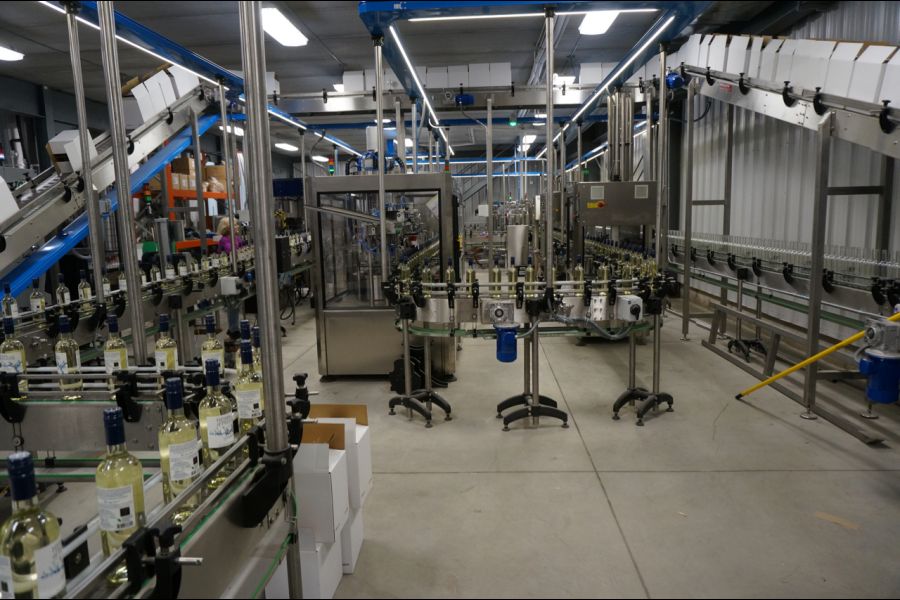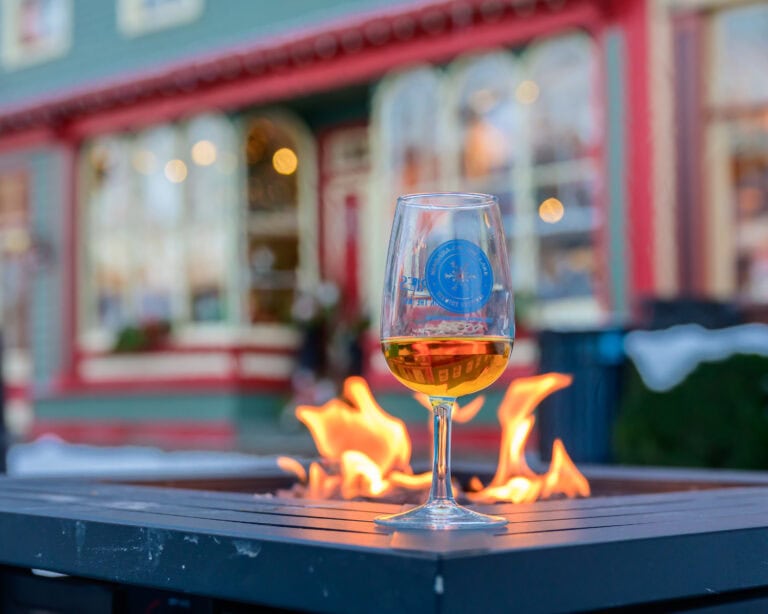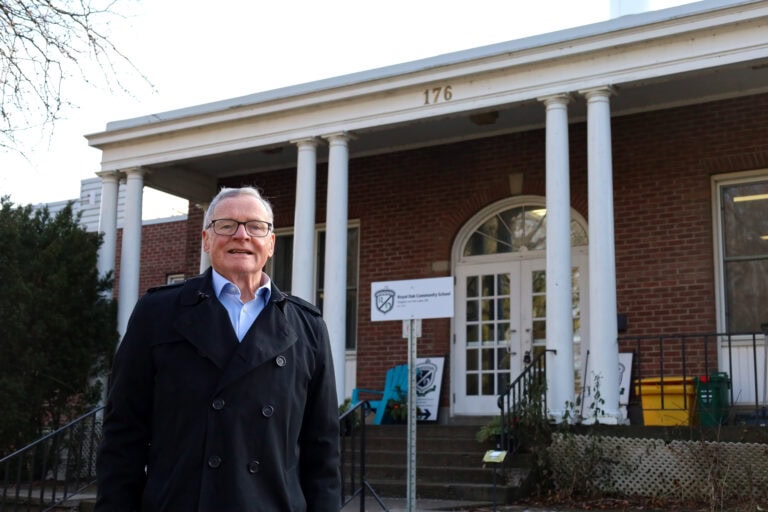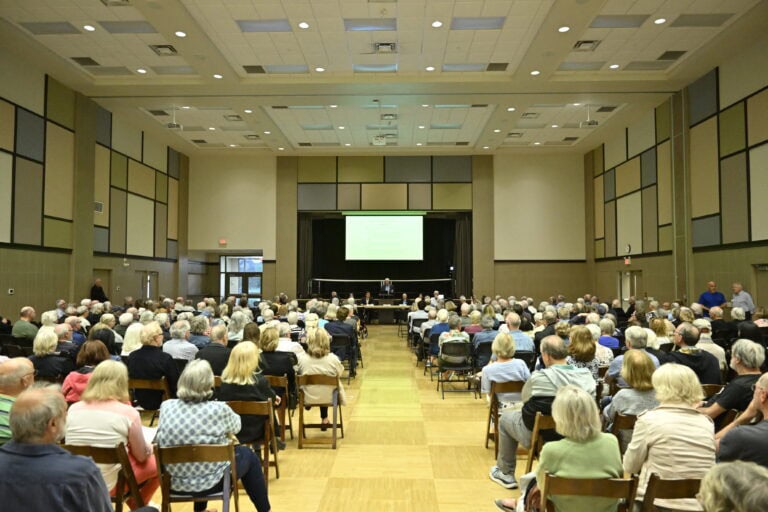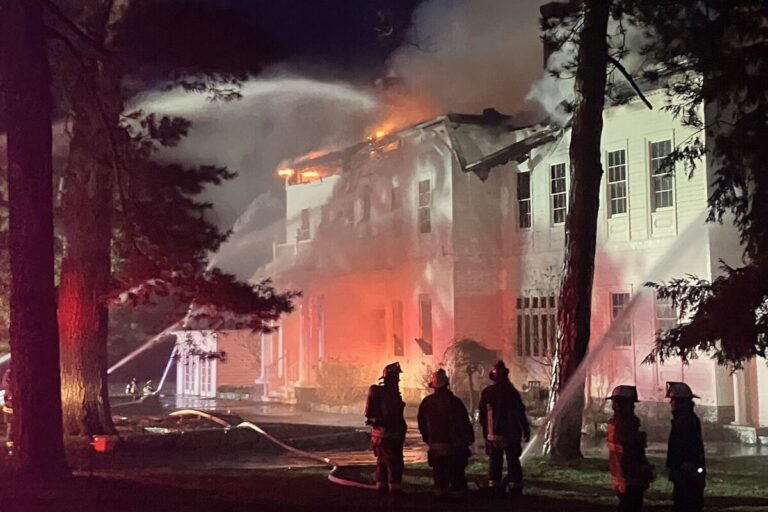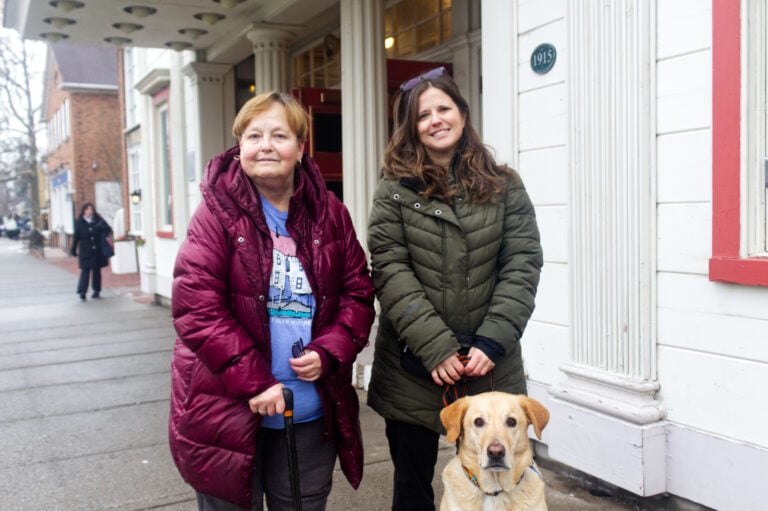Editor's note: Prior to the COVID-19 pandemic, we launched our series on Innovation in Wine Country to focus on innovation and expansion in the industry. Today, in our final instalment, we take a look behind the scenes at Henry of Pelham’s new bottling facility and expanded production space.
A newly completed production and storage space and high-tech bottling line is the single biggest capital investment ever for Henry of Pelham, says Matt Speck, owner/operator and vineyard manager.
The bottling line in action is an impressive sight to see.
Each bottle is unerringly guided through the same steps by the softly whirring machinery.
First the bottles are unloaded onto the waiting conveyer, swept along to the next station where they are rinsed, then they fall into the circle where they are precisely filled before being propelled to the machinery that applies the closure, whether cork or screw cap, and then around the corner for labelling, before snaking along the super-structure to be packed, put on pallets and shrink wrapped. This new bottling line delivers greater speed, increased capacity and enhanced flexibility.
“We can do 100 bottles per minute,” explains Speck. That translates to about 5,600 bottles per hour.
At that rate, the winery's bottling capacity is quadrupled.
“Our old bottling line was in the same space as our winemaking, so we couldn’t bottle during harvest and production. We could only bottle from January to August,” Speck says, adding, “In this new scenario, we have flexibility for bottling 12 months per year.”
“Our capacity was too small for our needs, so we’re using much of the extra capacity. We also speculated there would be a need for custom bottling we could do for other wineries, and it’s turned out to be even greater than we thought,“ he says.
The system offers greatly enhanced flexibility in the types of labels it can apply. The old system could apply one front label and one back label. The new one can do “up to four different labels, including various styles of neck bands, medallions and medals,” Speck says.
There are also more options for closures, including screw cap, premium screw cap, cork and sparkling cork and foil.
That last feature will be well used, since “we intend to do more sparkling wine,” he says.
The popularity of sparkling wine is growing, notes head winemaker Lawrence Buhn, “especially the charmat method, which makes a fun, friendly bubbly at lower price points.”
When sparkling wine is made in the charmat method, the secondary fermentation, which produces the bubbles, occurs in large tanks. In the traditional method, a more costly process, that stage happens in the bottle, and takes significantly longer.
Just steps away from the new bottling line stand three brand new charmat tanks, ready to start supplying that demand.
The end to end journey for the bottle may be short, but the road to launching the whole system has been a long one.
“It’s been two and a half years of design, construction, delivery of equipment and commissioning,” explains Buhn.
The first step was the new building for bottling and storage. “It’s almost the size of the existing winery,” says Speck.
The new bottling system is from Italy. The installation began last October, with set up and commissioning underway in December, and the line became fully operational early in 2020.
One of the first runs on the new line bottled 2,000 cases of Chardonnay in just two days. “It’s pretty exciting for this team,” enthuses Buhn.
The winery has made adjustments to make sure staff are safe working in this pandemic era, but “the production side is still producing, and the crop is still growing,” says Speck. “We’re trying to run full speed.”
“LCBO and grocery sales have been good,” he notes and “they account for 75 per cent of our overall sales.” Restaurant and onsite sales are down, but online sales have “really taken off,” he adds.
“The vans we use to deliver to restaurants we’re now using to deliver direct to customers.”
The winery has plans to set up outdoor spaces to accommodate visitors at safe distances later in the summer.
“I’m kind of optimistic we’ll be busy. We need to be creative with our outdoor spaces.”
READ THE SERIES: To see our entire six-part series, go to www.niagaranow.com and search on “innovation in wine country.”



